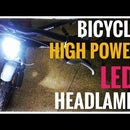Introduction: SMD SOLDERING 101 | USING HOT PLATE, HOT AIR BLOWER, SMD STENCIL AND HAND SOLDERING
Hello!
It is pretty easy to do soldering ....Apply some flux, Heat the surface and apply solder.But when it comes to soldering SMD components it requires a little bit of skill and some tools and accessories.
In this Instructables, I will show you my 3 techniques of SMD soldering using Hot Air Re-flow Soldering Station, Hot Plate and normal Soldering Iron. I will use SMD Stencil for applying solder paste in first two methods and normal 25W solder iron and solder wire for Hand Soldering. You may use any one method whichever you feel it easier.
Please checkout the video for easy understanding!
Step 1: Gather the Materials
63/37 solder paste
26 gauge flux cored solder wire
25 watt soldering iron
Solder Rework Station (For Hot air Soldering)
Hot Plate (Roti Maker) (For Hot plate Soldering)
IPA Solution and Cotton (for cleaning)
De-solder Pump
De-solder Wick
SMD Stencil (order online)
Tweezers
Wire Stripper
Cutting Pliers
If you are unaware what a SMD stencil is, it is a laser cut stainless steel sheet which is used to dispense the Solder paste very efficiently onto PCB's. Large production Lines in industries use sophisticated machines along with SMD Stencil to dispense Solder paste.
Step 2: HOT PLATE SOLDERING
First, I will show you how to do Hot plate soldering . I will use an Electric Pan also known as Roti Maker here in India for soldering. Of course this does not have any Temperature Control, but I will manually look after the process. So there must be no Issues.
Industries use re-flow ovens with temperature profile Control to mass produce circuit boards. Re-flow ovens accurately control the heating and cooling profiles according to solder material and component datasheet. I stuck the PCB on my table using transparent tape and placed the SMD Stencil right on top of the Board. Align the Stencil with the PCB pads and it is a good idea to use magnets to secure the stencil in place. Here I am using 63% tin - 37% Lead solder paste. Apply some Solder paste on the stencil and use something flat, like a PCB or credit card to spread the Solder uniformly on the PCB. Remove the Stencil carefully and you can see that the Solder Paste is Uniformly Applied on the Solder pads of the PCB. Place all the surface mount components and placed the Board on the Hot Plate. Turn On the hot plate and wait until the Solder paste melts and take out the board immediately after melt-down of solder paste. The Solder paste melts somewhere around 180 degree Celsius to 220 degree Celsius and this process took me around three minutes to complete the soldering.
Step 3: HOT AIR SOLDERING
If you are dealing with Temperature sensitive components, previous method cannot be used as there is no temperature control. So I will use Hot Air Re-flow Soldering Station. This is a reliable tool and is not very expensive compared to Re-flow ovens.
Follow the same procedure to apply the solder paste on the PCB as shown in the previous step. After placing the components on the Circuit Board, set the rework station to required temperature and Air Speed. Bring the Nozzle of Blower close to the Circuit board and wait until the Solder paste melts and fuses with the IC Pins. Please Note that If you are soldering LED's using this method, do not blow the hot air directly on the LED's, Instead, blow the hot air behind the PCB to heat the pads and the solder paste will fuse together with LED. It is not required to place the components Exactly on the PCB. A little Amount of placement Offset will be corrected Automatically because of the Surface tension of molten Solder paste.
Step 4: SMD SOLDERING USING SOLDERING IRON
Hand Soldering
If you don't wish to use a hot plate or a rework station, this method uses a soldering iron, flux and solder wire. It is convenient to use a sharp tip iron but it doesn't really matter much. I placed the Circuit board on my home made PCB Holder.
I Have attached the link to that video at the End of this instructable. Apply some flux on the pads and heat the surface to clean the pads and remove the oxidation layer. For two terminal components like resistors, capacitor and diodes, first apply some solder on any one pad by Holding the Soldering Iron approximately at 45 degrees, and then heat the solder and place the component using a pair of tweezers.
Then tin the other end also. Here I am using 26 gauge flux cored soldering wire. Similarly for soldering SMD ICs, Clean the surface using flux and cotton. Then apply some flux in the Corners to hold the IC in place and solder the corners first and then solder the other pads.
Sometimes there are chances of formation of solder bridge between the IC pins. There are two ways to rectify that. One is heat the solder bridge and simultaneously use the de-solder Pump to suck away the extra solder. The other method is to use a de-solder wick. Place the wick on the solder bridge and heat the surface.
De-solder wick is nothing but a stranded copper wire coated with flux to increase the affinity of solder towards copper.
Step 5: FINISHING
Once you have completed the soldering process it is Important to remove the flux from PCB. Spray a small quantity of IPA(iso-propyl alcohol) Solution and clean it with the cotton.
If you have any doubts or suggestions, Please leave them in the comments section below.
Thank you for visiting my Instructables!
H S Sandesh Hegde
sandesh.hs1234@gmail.com




